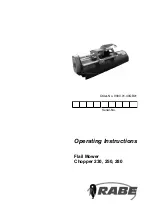
Meta Data Tags
SAV
EAV
SC3
SC2
SC1
SC0
00
XY
FF
00
Channel Data
FF
00
SC3
SC2
SC1
SC0
00
XY
FF
00
Channel Data
FF
00
Luma Channel
Chroma Channel
SC3
SC3
SC2
SC2
SC1
SC1
SC0
SC0
00
XY
FF
00
Channel Data
Meta Data Tags
SAV
EAV
FF
00
Internal Modules
163
SPRUHI7A – December 2012 – Revised June 2016
Copyright © 2012–2016, Texas Instruments Incorporated
High-Definition Video Processing Subsystem (HDVPSS)
1.2.8.2.7.5 Super Frame Concept in Line Multiplexing
Older TI DSPs do not natively support Line Multiplexing, which is thus far proprietary to the TVP5158
video decoder. When connected to older DSPs, the CPU must parse through the pixel data and in order to
create frame buffers. Hence, the ‘5158 team came up with the concept of a super frame. Different camera
sources are interleaved on a line-by-line basis. The beginning of each line carries a Metadata tag that
provides key information about that line.
This Metadata tag is preceded by a SAV codeword in which F=0, V=0, and H=0. In other words, the older
DSPs would see this line as a normal active video line.
At the end of the line, an EAV code is inserted with an appropriate number of padding pixels following it.
This EAV code has F=0, V=0, and H=1.
In older DSPs, a set of like sized buffers are defined to store raw video frames. When a line’s V bit
changes, the current buffer is closed and an interrupt is given to the CPU. An empty buffer is used to store
the incoming line’s pixels. With the 5158’s SAVs and EAVs having the V flag always set to 0, the older
DSPs would never advance their buffer pointer.
Hence, there is a dummy vertical blanking line. The external device would insert an artificial vertical
blanking line with a SAV having F=0, V=1, and H=0. It also inserts a dummy EAV with F=0, V=1, and H=1.
This dummy line causes the older DSPs to change input buffer and signals the CPU to parse the captured
data and build frame buffers.
The startcodes used for the Metadata wrapped lines and the dummy lines form the Super Frame.
The dss_vip_parser has logic to parse out the super frame, analyze the Metadata tags, and frame buffer
the line contents appropriately.
1.2.8.2.7.6 8-bit Data Interface in Line Multiplexing
is an example of an 8-bit line multiplexing interface. Channel Data is the CbYCrY sequence
representing a line. Preceding Channel Data is the four byte Meta Data tags. Note that the Meta Data
bytes are replicated in both the Luma and the Chroma sites. The entire structure is bounded by a
traditional SAV/EAV code in which the V flag is 0.
Figure 1-114. 8-bit Line Mux Interface
1.2.8.2.7.7 16-bit Data Interface in Line Multiplexing
describes the 16-bit line multiplexing interface. Channel Data is the active line. All the Y
pixels are in the Luma Channel. The CbCr pixels are in the Chroma Channel. Each cycle, a 16 bit value
representing one Luma sample and one Chroma sample enters the VIP Parser. The Meta Data tags are
replicated in both channels. Likewise, the SAV/EAV startcodes are found in both channels. The V flags for
the SAV/EAV startcodes are always 0.
Figure 1-115. 16-bit Line Mux Interface
















































